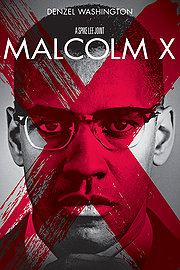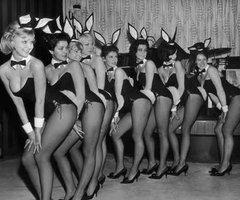Slavery: How were the slaves represented?
All the slaves throughout the films were shown as inferior to white people, as their behaviors all represented inferiority and submissiveness, such as their lack of education and proper English, as well as complete obedience to their masters.
In the film, Gone with the Wind, slaves were not as prominent to the film as the other two, but rather they were in the background. The slaves were only shown a few times, other than Mammy, and depicted as typically happy in their household. This film did not show the brutality of whites against their slaves, but rather solely depicted the social hierarchy between the two races. This film was written from a white southern woman’s point of view, and so the movie tends to focus more on the war and the terror from living in a war zone rather than slavery.
Slavery was most brutally depicted in 12 Years a Slave. This movie is based on a book written in 1853 by Solomon Northup. Therefore, this film is mainly represented from a black slave’s perspective, and does not shy away from showing the raw truth of slavery in painfully long scenes. This personal account of slavery is the most authentic of the three films. The slaves in this movie are constantly beaten and harassed for no reason, and there are hardly any moments of joy in the film. Rather than all the slaves being uneducated, 12 Years a Slave has an educated and free black man as the main character, and then shows what happens when he is stripped of his identity entirely. Solomon Northup, the main slave, has to train himself to be submissive and uneducated in order to not get killed or beaten by the slave owners.
Lastly, slavery in Django Unchained was similar to 12 Years a Slave, but then with added dramatic Hollywood flair to the film as well. This movie shows the intensity and brutality of slavery, yet Tarantino makes Django an untouchable, former slave, and bad-ass hero. Many accounts of slavery are accurate – the terror, beating, and lonely life of slaves – however there are also dramatized events that did not necessarily occur, such as Mandingo fighting, or ones that were less common practice, such as runaway slaves getting eaten by dogs.
Violence: Impact of the use of violence
Violence of slavery is depicted differently throughout each film. In Gone with the Wind, there is hardly any violence towards the slaves, other than one slap by Scarlett. The slaves in this movie are talked down to, but are not physically abused. In 12 Years a Slave, the violence is most intense in my opinion. The scenes show the physical devastation of the slaves on a daily basis – the lashings, hangings, rape, etc. This film lingers on these scenes for longer than the average person would like, creating a brutal impact to hit the audience. The violence in Django Unchained could be considered most violent of the movies, given the amount of blood and gore in the film. However, many of these scenes were over dramatic and almost comical, where the impact of violence is not as depressing to watch. The violence still allowed the audience to see the devastating physical affects slaves had to endure, but 12 Years a Slave had the most intense and graphic imagery for violence against slaves.
Accuracy: Which films are most historically accurate?
12 Years a Slave seems to be the most historically accurate. This film is based on an autobiography from a slave during the 1800’s, and therefore tells a real story about the memoirs of a slave. The treatment of slaves and intensity of slave owners is accurately portrayed in this film, as this movie does not shy away from exposing the entire, brutal truth. Gone with the Wind tells a story of the Civil War from a Southerner’s perspective, and this film is more about Scarlett’s love affairs rather than history. This film is not historically accurate but rather for entertainment. Lastly, Django Unchained has many historical accuracies, such as slave treatment, their fear of their owners, dogs eating runaway slaves, and even the use of the “n word.” However, the slang, music, dramatized violence, and storyline are not historical. This movie provides an entertaining spin on slavery, allowing the audience to see the injustice of slavery, as well as enjoying a Hollywood story.



Memory: How important is our historical memory of Civil War in relation to the making of these films?
The historical memory of the Civil War and slavery at the movie was made influenced heavily on the context of slavery in the films. The first of these films made was Gone with the Wind, released in 1939. The slavery portrayed in this film, as mentioned above, is mild compared to the more modern films, as the slaves seem to be happy working for rich white families. During the 1930’s in America, there was still a lot of segregation and discrimination against blacks, and therefore the historical memory of slavery during those days was not fully understood, and the social hierarchy of blacks and whites portrayed in the film was still present when the film was released.
Modern day historical memory of the Civil War and slavery is very different than past ideologies. Today, discrimination is outlawed, and America strives to become a society of equality. America still has a long way to go before achieving equal opportunity for all, however, since Barack Obama became the first black president in 2009, African Americans have come one step closer to equality. As America’s ideologies change, so does the understanding of slavery and the Civil War. Today, Americans remember slavery as a despicable form of power, and the Civil War as a step toward emancipation from injustice. Both 12 Years a Slave and Django Unchained were made in the past couple years, 2013 and 2012, and so the directors had the knowledge and truth of slavery, and sought to expose it in their films.
Context: What is the context of film’s creation?
As previously stated, Gone With the Wind was the first of these films to be developed. During this period in time, 1939, the Great Depression was still going on, but as World War II began, the economy started to turn around toward positive change. During this time there was still strict segregation between blacks and whites, and therefore this film does not show the wrong-doings of whites or try to create sympathy toward black slaves. Rather, this film depicts the hardships of a white family during the Civil War, and the terrors that came with being in a war zone. Likely because the Great Depression was slowly ending, this film wanted to provide entertainment in an otherwise devastating decade, choosing to focus on topics other than oppressed slaves, especially since blacks were not fully accepted into American society yet.
By 2007, Quentin Tarantino wanted to create a film about the Civil War, which eventually led to the making of Django Unchained. Tarantino thoroughly researched the war and slavery in order to have full understanding of this time period, and wanted to add western flair to the film. During the inception of this film, Barack Obama was elected as president, and again reelected in 2012. I speculate that this could have helped prompt Tarantino’s vision of telling a story of an African American underdog (slave) becoming a hero.
Some people believe that since the election of a black president, movies about blacks and slavery have become pop culture. Whether true or not, another movie about slaves was released by 2013. Steven McQueen wanted to make a film about slavery, and when his partner discovered Solomon Northup’s autobiography, McQueen was eager to make his story of 12 Years a Slave known. McQueen took Northup’s memoirs and plastered them on the big screen, trying to portray the raw, untold truth about slavery.
Script: How did the adaption of script portray slavery in the film?
Both Gone with the Wind and Django Unchained were written and directed by white Americans, some even from the South. Gone with the Wind was originally a book written in 1936, and Quentin Tarantino wrote Django Unchained just a few years ago. Because white Americans wrote all the original scripts and screenplays, these films lack the true perspective of slavery. These stories are not told from an actual account of a slave, and therefore had the liberty to add Hollywood “truth” and omit potential facts.
On the other hand, 12 Years a Slave adopted the script from Solomon Northup’s memoirs in 1853, before the Civil War. This story tells the factual accounts of slavery from a black slave’s perspective in the South. In this film the portrayal of slavery seems to be the most accurate, as McQueen does not shy away from the black perspective.
 The poor working conditions along with the mistreatment of mill workers allow this movie to carry a pro-union message. Sympathy is developed for the workers, as the audience sees them struggle to make ends meet, while being over worked and underpaid. This film gives a voice to the weak as Norma Rae is an underdog standing up for herself and her co-workers to bring about justice in the mill. Additionally, because Norma Rae is a woman she is considered even more inferior in society, but still succeeds in winning over those in power (the company). Because of Norma’s gender, many argue that this film also creates a feminist message.
The poor working conditions along with the mistreatment of mill workers allow this movie to carry a pro-union message. Sympathy is developed for the workers, as the audience sees them struggle to make ends meet, while being over worked and underpaid. This film gives a voice to the weak as Norma Rae is an underdog standing up for herself and her co-workers to bring about justice in the mill. Additionally, because Norma Rae is a woman she is considered even more inferior in society, but still succeeds in winning over those in power (the company). Because of Norma’s gender, many argue that this film also creates a feminist message. In
In 








